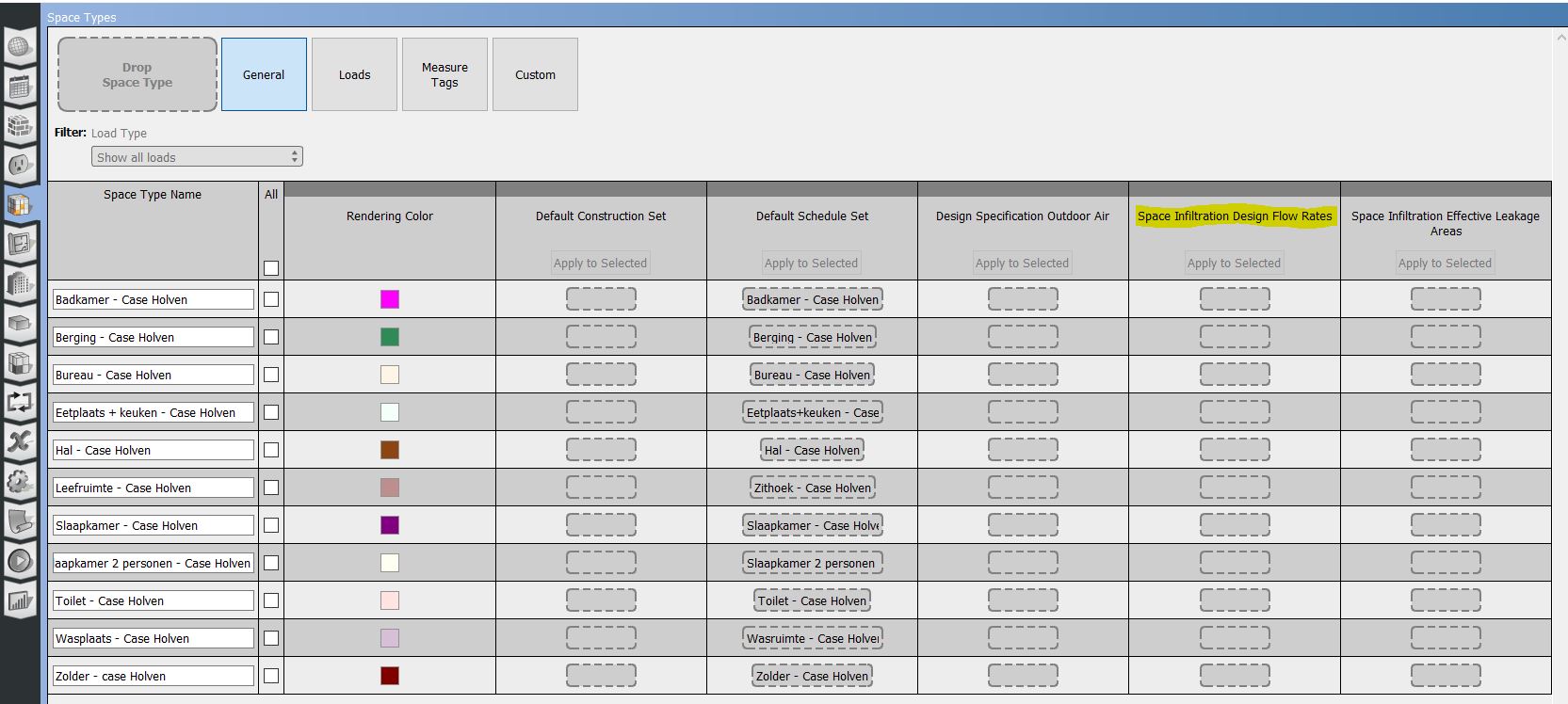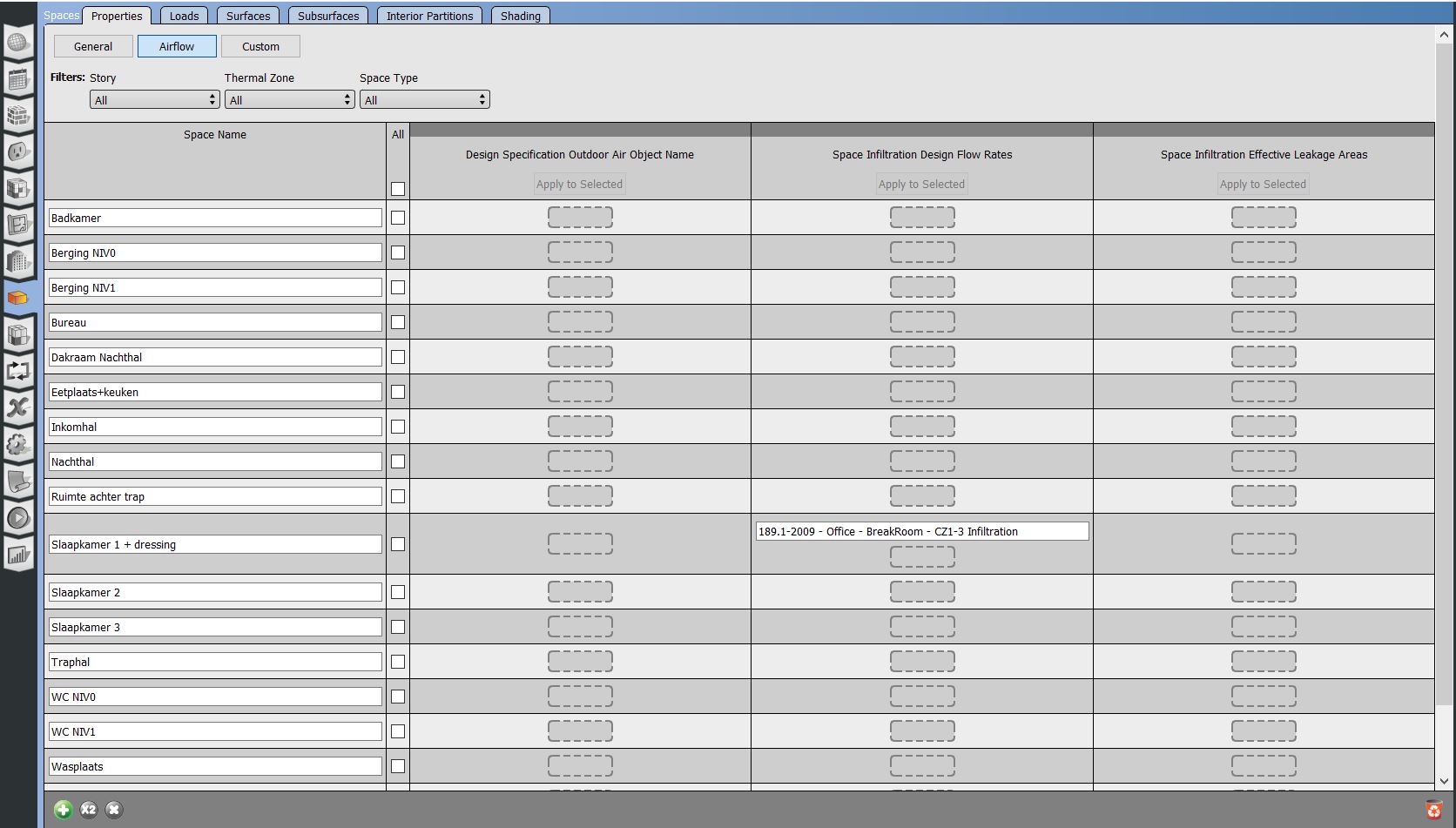What is the correct way to implement infiltration?
I have some struggles with implementing infiltration in my OpenStudio model. If I understand it well, is infiltration the flow of air from the outdoor environment directly into a thermal zone? So this can be caused by opening and closing doors, some cracks around windows, .. ? Does the airflow caused by opening the windows also belong to the infiltration input parameter? During the summer period here in Belgium, a lot of residents open some of their windows at night or during the evening to enhance the effect of free (night)cooling. I was also wondering if there are any default values that represents a good estimate of the airflow caused by infiltration that I can use for the design flow rate ?
In my model I have implemented a mechanical ventilation, but I got the advice to also implement infiltration. I found two ways to implement infiltration into my model. Is there a difference between the two and which one I use best?
First one: space types < General < space infiltration design flow rates

Second one: Spaces < Airflow < space infiltration design flow rates








